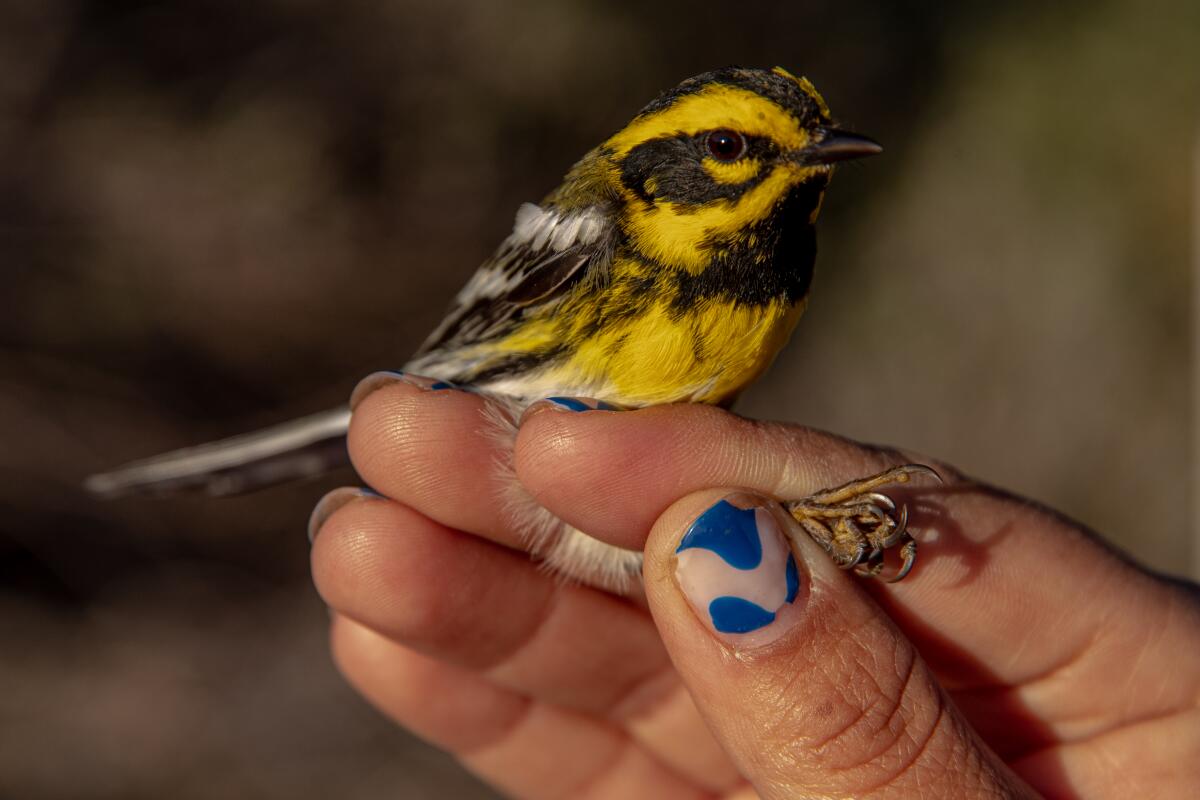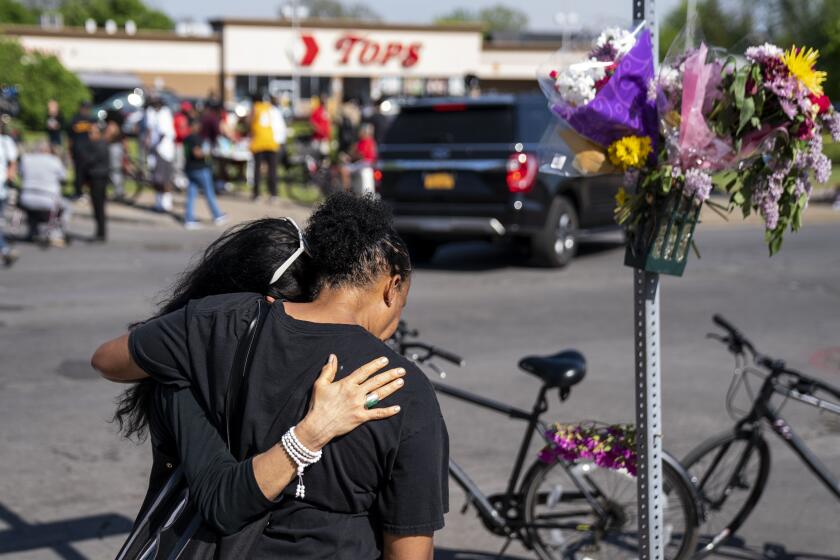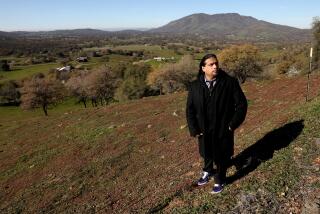Bird names shouldn’t honor bigots and enslavers — or anyone

- Share via
The American Ornithological Society‘s announcement earlier this month that it will end the naming of bird species after people is a decision of refreshing clarity. Because after two years of deliberation, the group that manages the official list of English-language bird names in the Americas came to the realization that instead of changing common bird names deemed offensive or exclusionary on a case-by-case basis, it needed to reframe the issue entirely.
So the group decided it would change the names of all 260 birds in its jurisdiction that are named after people, and three that have “derogatory or culturally unsuitable references or origins.” The effort to right past wrongs and make the world of birding more inclusive will affect about 5.5% of bird names the group oversees. The process will begin next year, focusing on about 80 species found in the United States and Canada as the first of four phases.
I appreciate this as an elegant and comprehensive solution that surpassed even the expectations of activists, and marks a meaningful turn for a field dominated by white men that has been reluctant to change.
It no longer works to call one whacked-out gunman an aberration. Not when we accept the nearly daily efforts to make this a more racist nation.
Not only are these eponyms and honorifics nonsensical — the naturalists who named them after their contemporaries did not “discover” them any more than Columbus discovered the Americas. They are also alienating, part of an antiquated and repugnant landscape of animal, plant and place names that exclude and demean Indigenous communities and people of color.
Birds don’t belong to anyone, after all. Indigenous people in the Americas knew and named them centuries before white settlers arrived, and preserving the naming conventions from the 1800s only perpetuates a culture of exclusion and white supremacy.
I’m not much of a bird-watcher, but I grew up in Colorado hiking and exploring the state’s mountains, foothills, plains and creeks and became familiar with some of the most common species, including red-winged blackbirds, meadowlarks and red-tailed hawks. But it’s clear even to me that names such as Bachman’s Sparrow, Steller’s Jay, Cooper’s Hawk and Audubon’s Oriole are absurd and inappropriately suggest discovery and possession. It makes a lot more sense to use more descriptive monikers that celebrate a bird’s characteristics, appearance or habitat and other qualities that are more useful for identification.
There’s something especially abhorrent about naming plant and animal species after people who not only held racist views, but committed despicable acts. Townsend’s warbler, Townsend’s Big-eared Bat and Townsend’s Chipmunk, for example, are among the creatures whose names honor a 19th century ornithologist who dug up the graves of Indigenous people and decapitated their skulls to try to prove their racial inferiority, calling them “savages little better than brute beasts.”
It’s not just living things that have objectionable names. The U.S. is still dotted with towns, mountains, lakes, public buildings and monuments that bear the names of racists, colonizers and enslavers, or slurs against Black and Indigenous people. Though there’s sometimes a confounding level of resistance to changing them, it is slowly happening, such as when UC Berkeley Law School dropped the name of its Boalt Hall because it honored a 19th century attorney now known to be an anti-Chinese racist.
There is no reason for Fort Bragg to cling to the name of a Confederate general, and not a very good one at that?
In 2020, the McCown’s Longspur, a bird named after a Confederate general who fought for slavery and against Indigenous tribes, was renamed the Thick-billed Longspur. And a 14,265-foot peak overlooking Denver, not far from where I grew up, which had been called Mt. Evans after a territorial governor who authorized the massacre of hundreds of Cheyenne and Arapaho people in 1864, was renamed Mt. Blue Sky earlier this year.
These are steps in the right direction.
But it’s important to note that the American Ornithological Society’s new approach to naming didn’t come without resistance from those who would prefer to keep things as they were. The change was championed by activists with the Bird Names for Birds campaign that was launched in June 2020 in the aftermath of the murder of George Floyd and the incident the same day in New York’s Central Park where a white woman called 911 on Black birder Christian Cooper.
Those events ignited a reckoning over the many ways people of color have been excluded and harassed. But the same issues apply to the outdoors writ large, where communities of color still suffer from exclusion and a lack of belonging in spaces that white people have long enjoyed without question.
Building support for avian conservation among all communities is especially important at a time when 1 in 4 birds in North America have disappeared over the last 50 years as humans alter their habitat through environmental destruction and climate change.
Building a culture of inclusion isn’t as easy as removing problematic names, but changing the language we use is a decent way to start.
More to Read
A cure for the common opinion
Get thought-provoking perspectives with our weekly newsletter.
You may occasionally receive promotional content from the Los Angeles Times.











